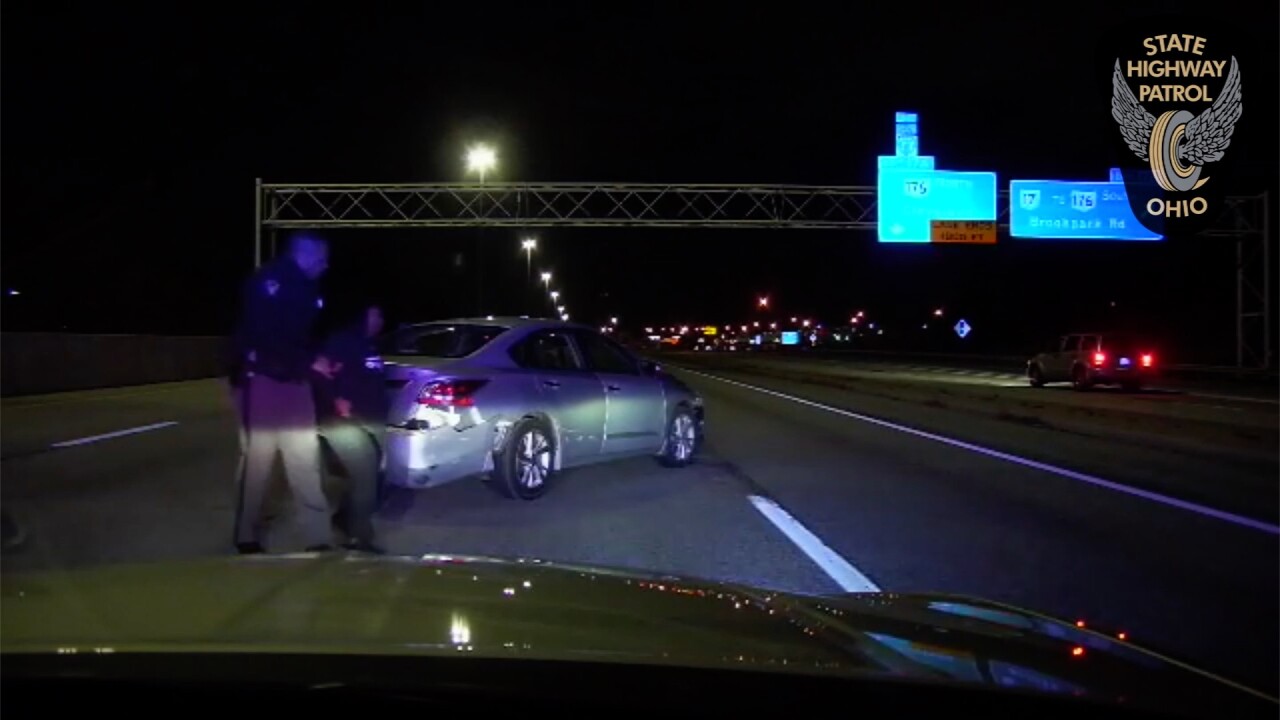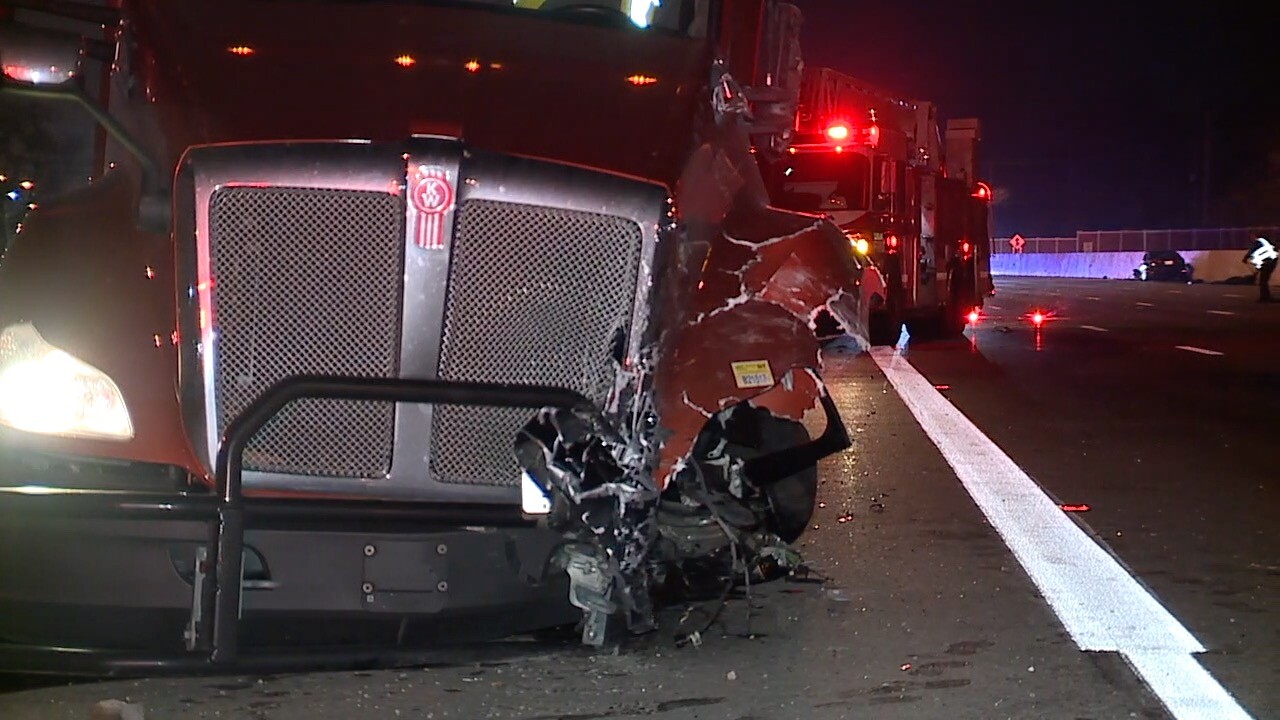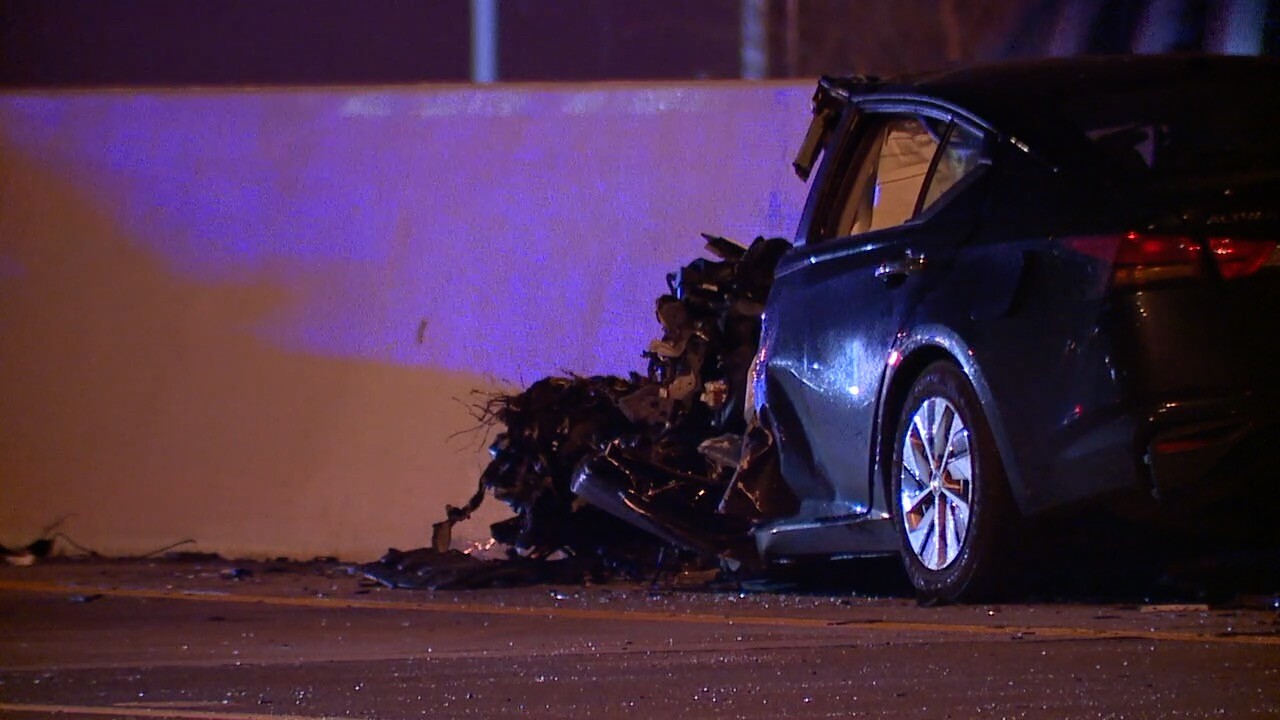CLEVELAND — Two recent incidents of wrong-way drivers — one resulting in a violent, head-on collision on Thursday and the other ending in a near miss on Tuesday thanks to the quick actions of a state trooper — again highlight the vexing and deadly problem of wrong-way crashes on Ohio’s roadways. Although exceedingly rare, wrong-way crashes routinely result in serious injury or death and nearly half of all wrong-way crashes involve an impaired driver.
Early Thursday morning, a 25-year-old woman entered the exit ramp on I-90 near East 185th Street. Approximately two minutes later, the wrong-way driver slammed head-on into a semi-tractor trailer, resulting in a violent collision that sent debris and diesel fuel across four lanes of traffic. The woman, whose identity has not been released, was rushed to the hospital and is said to be in critical condition. The driver of the semi was not seriously injured.
Two days prior, a young woman entered the exit ramp near State Road and I-480 and eventually began traveling eastbound in the westbound lanes. A state trooper who was patrolling the area saw what he initially believed to be a stalled vehicle. As soon as he made a u-turn, the trooper reported seeing the woman driving eastbound in the westbound lanes.
Fortunately, traffic was light and the trooper was able to successfully perform a pit maneuver, causing the woman to spin out and come to rest in the middle lanes.

“You’re going the wrong way on the freeway, ma’am,” the trooper said. After taking the woman into custody, he was able to move her disabled vehicle and his own patrol car into the emergency lane just as other motorists approached.
The fact that the trooper risked his own life to stop the woman, who was reportedly impaired, from causing a serious crash, isn’t lost on Sgt. Ray Santiago.
“Thankfully, he was near and he was close. He took very quick and decisive actions and was able to get the vehicle stopped before anyone could get seriously injured or worse,” Santiago said. “That sense of urgency, that immediacy is present because you know what the outcome can be and lately we’ve seen that outcome far too often.”

According to preliminary data from Ohio State Highway Patrol, there have been 144 wrong-way crashes on divided highways so far this year, resulting in 16 fatalities. Wrong-way crashes have been at or above 150 each year since 2016, according to state data.
From 2016 to December 2021, there have been a total of 945 wrong-way crashes, killing 134 people and injuring nearly 800. Of those 945 wrong-way crashes, 368 have involved an impaired driver, resulting in 96 deaths and 470 people injured.
Although wrong-way crashes have gained notoriety in recent years, they are still exceedingly rare, accounting for less than one percent of all crashes statewide any given year.
“There is no silver bullet unfortunately for solving and fixing this problem — other than driving sober,” said Matt Bruning, a spokesperson for the Ohio Department of Transportation. “The vast majority of these are severely impaired drivers. There really isn’t a pattern that develops. For example, all of the wrong way incidents that we have had in the Cleveland area the last couple of weeks, not one single one has been in the same ramp or same location. The challenge is not so much what to do but where to do it.”

How quickly a wrong-way driver can turn into a serious wrong-way crash can also be an especially difficult variable to overcome. For instance, the woman involved in Thursday’s wrong-way crash on I-90 had entered the highway the wrong way at 2:10 a.m. and was involved in a crash within two minutes.
Although wrong-way crashes are quite rare, ODOT has taken numerous steps to limit them, Bruning said. Road crews have installed additional ‘wrong way’ signage at entrance and exit ramps, even going as far as to install multiple ‘layers’ of signs. Additionally, crews have installed the signs closer to the ground and better in drivers’ fields of view.
“We’ve put signs closer to the ground because research has shown that impaired drivers — that make up the vast majority of these crashes — tend to look down so we’ve put signs closer to the ground to try to catch their attention,” Bruning said. “All of the reflectors that are on the pavement, would reflect back red to you if you go the wrong way. We have put several measures in place to try to alert drivers that they are going the wrong direction.”
ODOT has also installed new wrong-way driver detection systems that activate flashing lights to warn a driver that they are going the wrong way. The system also automatically notifies ODOT and the local police department. Cleveland has one such system located near West 28th Street and the Shoreway, a location that once had a high number of wrong-way driving incidents. However, it isn’t prudent nor cost-effective to put the high-tech systems at all of the state’s 5200 ramps statewide.
Additionally, Bruning said the often recommended spike strips have proven to be ineffective and unreasonable to implement. Although they are the most suggested solution to come from the motoring public, Bruning said numerous state and national studies have found them to be ineffective and unreliable, especially in Ohio’s climate.
The best, most cost-effective solution? Having people drive sober.
“What’s problematic with wrong-way drivers is just the uncertainty with the whole situation. You don’t know if you’re dealing with an impaired driver, someone going through a medical emergency, someone who is simply lost. There are so many unknowns, in addition to the elevated risk for injury or harm,” Sgt. Santiago said. “Being alert and aware we can all get there. That’s why it is ever important to not be distracted and aware of your surroundings. When you do see something like this happening, you’re able to get safely off the roadway and call 911.”



